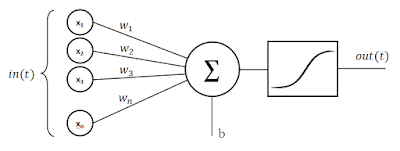Package structure
Hello!
During the first period of GSoC I have worked mostly on analyzing the Matlab structure of the net package in order to guarantee the compatibility throughout the whole project. The focus of the project is on the convolutional neural networks, about which I will write the next post.
Regarding the package structure, the core will be composed by three parts:
InputParser is used in every class for the parameter management and the attributes setting.
> # TEST LAYERS
> a = imageInputLayer([2,2,3]); # first layer
> b = convolution2dLayer(1,1); # second layer
> c = dropoutLayer(1); # third layer
> layers = [a b c]; # Layer object from layers concat
> drop = layers(3); # Layer element access
> drop.Probability # Access layer attribute
ans = 0.50000
Regarding the package structure, the core will be composed by three parts:
- Layers: there are 11 types of layers that I defined as Octave classes, using classdef. These layers can be concatenated in order to create a Layer object defining the architecture of the network. This will be the input for the training function.
- Training: the core of the project is the training function, which takes as input the data, the layers and some options and returns the network as output.
- Network: the network object has three methods (activations, classify and predict) that let the user compute the final classification and prediction.
 |
| Figure 1: conv nnet flowchart |
I have already implemented a draft for the first point, the layers classes [1]. Every layer type inherits some attributes and methods from the parent class Layers. This is useful for creating the Layer object: the concatenation of different layers is always a Layer object that will be used as input for the training function. For this purpose, I overloaded the cat, horzcat and vertcat operators for Layers and subsref for Layer. I need to finalize some details for the disp methods of these classes.
 | |
|
InputParser is used in every class for the parameter management and the attributes setting.
The objects of these classes can be instantiated with a corresponding function, implemented in the directory inst/. Here an example for creating a Layer object
> a = imageInputLayer([2,2,3]); # first layer
> b = convolution2dLayer(1,1); # second layer
> c = dropoutLayer(1); # third layer
> layers = [a b c]; # Layer object from layers concat
> drop = layers(3); # Layer element access
> drop.Probability # Access layer attribute
ans = 0.50000
All functions can be tested with the make check of the package.
The next step is a focus on the Tensorflow integration, with Pytave, writing a complete test for a regression of images angles and comparing the precision and the computational time with Matlab.
[1] https://bitbucket.org/cittiberto/octave-nnet/src/35e4df2a6f887582216fc266fc75976a816f04fc/inst/classes/?at=default
The next step is a focus on the Tensorflow integration, with Pytave, writing a complete test for a regression of images angles and comparing the precision and the computational time with Matlab.
[1] https://bitbucket.org/cittiberto/octave-nnet/src/35e4df2a6f887582216fc266fc75976a816f04fc/inst/classes/?at=default


Comments
Post a Comment